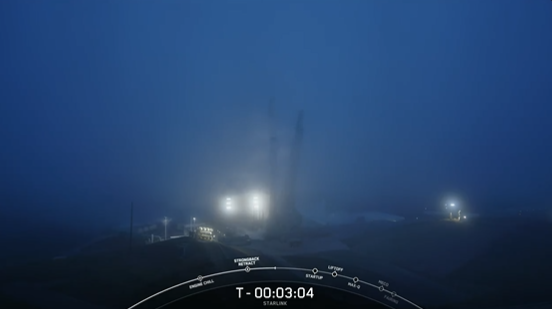Minutes blurred into one another as the rocket’s first stage, almost like a seasoned traveler, began its descent. This was no grand debut, no timid first-time return. It had danced this dance before—a dozen times, in fact. And yet, there it was, gliding back toward the Earth with a kind of quiet elegance, touching down on a ship—its name as tender as it was defiant, Of Course I Still Love You—waiting out in the Pacific. In the span of those fleeting moments, it had kissed the edge of space and found its way home, completing yet another cycle, familiar but never dull. Thirteen flights now… this booster knows the rhythm.
Watch Falcon 9 launch 20 @Starlink satellites to orbit from California, including 13 with Direct to Cell capabilities https://t.co/e96PhvnIaO
— SpaceX (@SpaceX) September 20, 2024
But the rhythm isn’t just about one returning rocket. Above us, far beyond our reach, SpaceX’s vision is unfurling—Starlink, a constellation of satellites, more than 7,000 now drifting in the cosmic sea. Over 6,300 are still out there, stitching together an invisible web that binds the farthest edges of the planet. Astrophysicists like Jonathan McDowell watch from below, eyes tracing the paths of these celestial wanderers, cataloging their silent journeys across the skies.
Today, though, something new joined the constellation. Thirteen satellites—different, unique. They carry a quiet power, able to speak directly to the cell phones tucked in our pockets, with no middleman, no delay. Just sky-to-earth in a whisper. Since the start of the year, these direct-to-cell satellites have been slipping into orbit, slowly reshaping how we connect—one launch at a time.
SpaceX launches 20 Starlink satellites, lands rocket at sea#SpaceX #Starlink pic.twitter.com/12k6oSpzUE
— B.C. Begley (@BC_News1) September 21, 2024
For SpaceX the year 2024 has been very regular. They successfully launched ninety-one Falcon 9 already, 62 of them for Starlink alone. Then there is the Falcon Heavy roaring into the void and two test flights of the colossal Starship, making it to a total of 94. It feels like the edges of what we thought possible are being redrawn, not just by the numbers, but by the sheer audacity of it all.
NEWS: SpaceX has successfully launched the Falcon 9 rocket today from Vandenberg Space Force Base, carrying 21 @Starlink satellites to low-Earth orbit, including 13 with Direct to Cell capabilities.
This was the 13th flight of this first stage booster.
Following stage… pic.twitter.com/QLAguXIJRp
— ALEX (@ajtourville) September 20, 2024
Qhen a mission like this is organized, and satellites sent to the space, it is never an end—it’s a thread in something larger. These are not just machines put into the space, they are ideas to generate, dreams that soaring into the clearer vision, and extending into a world still waiting to be touched.
Major Points:
- A Falcon 9 rocket launched from Vandenberg Space Force Base in California, cutting through the fog at 6:50 a.m. local time, carrying new Starlink satellites.
- The rocket’s first stage successfully landed on the drone ship “Of Course I Still Love You” in the Pacific Ocean, marking its 13th flight.
- SpaceX’s Starlink constellation now consists of over 7,000 satellites, with 6,300 currently operational, providing global internet connectivity.
- Thirteen of the 20 satellites launched are capable of direct communication with cell phones, bypassing traditional ground infrastructure.
- SpaceX has completed 91 Falcon 9 missions in 2024, with a total of 94 launches, including Falcon Heavy and Starship test flights.
Fallon Jacobson – Reprinted with permission of Whatfinger News


